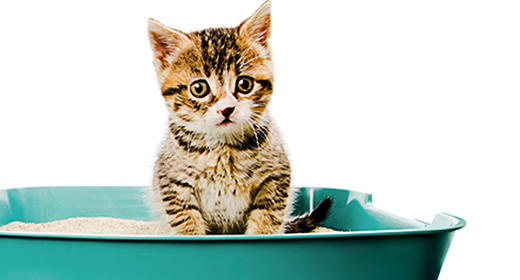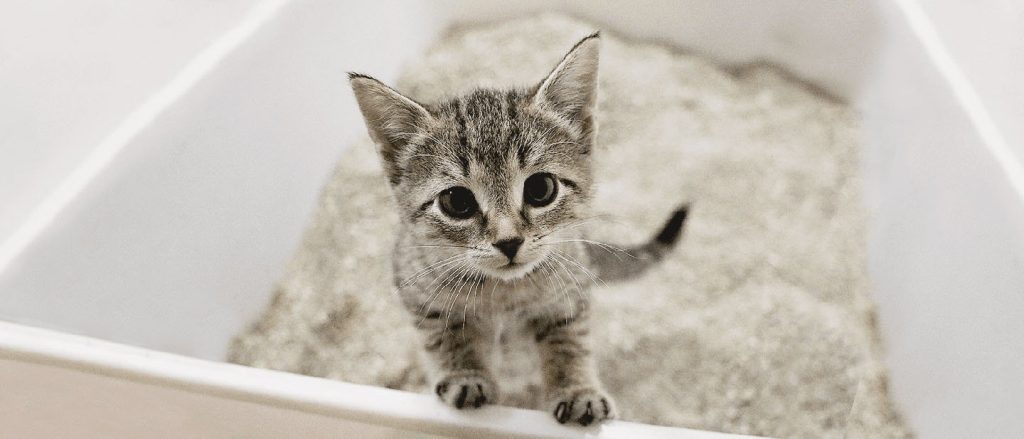Imagine coming home to a clean, odor-free space, knowing your new feline friend respects the same. Sounds like a dream, right?
Litter training a cat can make this dream a reality. But how long does it really take to get there? If you’re a pet owner eager to transform your home into a peaceful haven without the stress of unexpected messes, you’re in the right place.
By understanding the timeline and techniques for litter training, you’ll not only save time but also cultivate a stronger bond with your furry companion. Dive in to discover the secrets to a stress-free cat training experience, ensuring both you and your cat enjoy a harmonious living environment.

Credit: branamatv.com
Cat Litter Training Timeline
Understanding the cat litter training timeline helps set clear expectations. Each cat learns at its own pace. Some adjust quickly, while others take more time. Patience and consistency are key to success.
Typical Duration For Training
Most cats learn to use the litter box within one to two weeks. Kittens often catch on faster, usually in a few days. Adult cats might need more time, sometimes up to a month. Regular use and positive experiences speed up training.
Factors Affecting Training Time
- Age: Younger cats learn faster than older ones.
- Previous habits: Cats with litter box experience adapt quicker.
- Litter type: Cats prefer certain textures and smells.
- Litter box location: Quiet, accessible spots encourage use.
- Health: Illness can slow down training progress.
- Stress: Changes in environment may cause delays.
- Consistency: Regular cleaning and routines help learning.

Credit: www.petsradar.com
Choosing The Right Litter Box
Choosing the right litter box plays a key role in training your cat to use it. The box should feel comfortable and safe. A good litter box helps your cat develop good habits quickly. Attention to size, type, and placement helps avoid accidents and stress.
Size And Type Considerations
Pick a litter box that fits your cat’s size well. Small boxes can feel cramped, making your cat avoid them. Large boxes give enough space to move and dig. Cats prefer boxes with low sides for easy entry. Older cats might need boxes with lower edges for comfort.
Consider the type of litter box too. Covered boxes offer privacy but can trap odors. Open boxes provide ventilation but less privacy. Some cats like self-cleaning boxes, but others find them noisy. Observe your cat’s behavior to find the best option.
Placement Tips
Place the litter box in a quiet, low-traffic area. Cats dislike noisy or busy spots for bathroom needs. Avoid placing the box near their food or water bowls. Choose a spot with easy access at all times. Avoid cramped or dark corners where your cat may feel trapped.
Keep the box away from loud appliances or sudden disturbances. A calm, private place encourages regular use. Check the spot often to ensure cleanliness and comfort. Cleanliness keeps your cat coming back to the box.
Selecting Suitable Litter
Selecting the right litter is a crucial step in litter training your cat. The type of litter you choose can make a big difference in how quickly your cat adapts to using the litter box. Cats are picky creatures, and the wrong litter might lead to accidents or refusal to use the box altogether.
Think about your cat’s comfort and preferences. Have you ever noticed how some cats avoid certain textures or smells? This sensitivity means you should pay close attention to the litter you pick. The ideal litter should mask odors well, clump easily for simple cleaning, and be gentle on your cat’s paws.
Popular Litter Types
- Clumping Clay Litter:This is the most common type and is popular because it forms solid clumps that are easy to scoop. It controls odor effectively but can be dusty.
- Non-Clumping Clay Litter:Absorbs moisture but doesn’t form clumps. It’s often less expensive but requires full litter changes more frequently.
- Silica Gel Litter:Made from crystals that absorb moisture and control odor. It lasts longer but some cats dislike the texture.
- Natural/Plant-Based Litter:Made from materials like corn, wheat, or pine. It’s biodegradable and less dusty, a good choice if you want an eco-friendly option.
What Cats Prefer
Many cats prefer fine-grained litter because it feels softer on their paws. Rough or overly large granules can be uncomfortable and discourage use. Cats also tend to avoid scented litter, as strong fragrances can irritate their sensitive noses.
Pay attention to your cat’s reaction when introducing new litter. If your cat starts scratching outside the box or avoids it, the litter type may be the issue. Trying a small amount of a different litter type mixed in can help you find the best match.
Have you noticed your cat’s litter box habits changing with a new type of litter? Observing these subtle signs can help you select a litter that encourages consistent use and speeds up the litter training process.

Credit: www.iams-india.com
Training Steps For Success
Getting your cat comfortable with the litter box requires patience and clear steps. Each phase plays a key role in making the process smooth for both of you. Your consistent actions will build your cat’s confidence and help avoid frustration on either side.
Introducing The Litter Box
Place the litter box in a quiet, easily accessible spot where your cat spends a lot of time. Avoid high-traffic or noisy areas that might scare them away.
Show your cat where the box is by gently placing them inside after meals or naps. This helps them associate the box with a natural need to go.
Keep the box clean and filled with unscented, clumping litter. Cats dislike dirty or strong-smelling boxes, which can cause them to avoid it.
Encouraging Use
Reward your cat immediately after they use the litter box. Simple praise or a treat reinforces positive behavior.
If your cat hesitates, try gently scratching the litter with your finger to mimic digging. This can trigger their natural instincts to use the box.
Observe your cat’s habits to identify the best times to guide them to the box, such as right after eating or waking up.
Handling Accidents
Accidents are normal during training. Never punish your cat; it will only create fear and confusion.
Clean accidents thoroughly with an enzymatic cleaner to remove odors that might attract your cat back to the wrong spot.
If accidents happen repeatedly in one place, consider placing a litter box there temporarily or limiting your cat’s access until they improve.
Common Challenges
Litter training your cat can be a smooth process, but many pet owners face hurdles that slow progress. Understanding common challenges helps you stay patient and adjust your approach effectively. These obstacles often stem from your cat’s preferences, past experiences, or even the environment you provide.
Avoiding Litter Box Aversion
One major challenge is litter box aversion, where your cat refuses to use the box consistently. This can happen if the box is dirty, placed in a noisy or hard-to-reach area, or if the litter type is uncomfortable.
Keep the litter box clean by scooping daily and washing it weekly. Position the box in a quiet, low-traffic spot. You might need to experiment with different types of litter—some cats prefer fine-grained clay, while others like natural or unscented options.
Have you noticed your cat avoiding the box after a stressful event or change at home? This could signal a need to make the box more inviting or reduce stressors nearby.
Dealing With Behavioral Issues
Behavioral issues can complicate litter training and often require a closer look at your cat’s environment and routine. Cats might mark territory outside the box due to anxiety, boredom, or medical conditions.
Observe your cat’s habits closely. If they suddenly stop using the box, a vet check is important to rule out health problems like urinary infections. Enrich your cat’s environment with toys and regular playtime to reduce stress and boredom.
Consider adding multiple litter boxes if you have more than one cat. This reduces competition and territorial disputes, which are common reasons for litter box avoidance.
Tips For Quick Results
Getting your cat to use the litter box quickly depends on a few smart strategies you can start right away. These tips help your cat understand where to go and make the experience pleasant. The goal is to make litter training simple and stress-free for both you and your furry friend.
Positive Reinforcement
Reward your cat immediately after it uses the litter box. Use treats, gentle petting, or soft praise to create a positive connection with the behavior.
Ignore accidents calmly—never punish your cat. Negative reactions can cause fear and slow down training.
Have you noticed how your cat responds when you use a calm, encouraging tone? That can make a big difference in motivation.
Maintaining Cleanliness
Clean the litter box daily to keep it inviting. Cats avoid dirty litter boxes and may choose other spots if it smells bad.
Use unscented, clumping litter if possible. Strong fragrances can discourage your cat from using the box.
Place the litter box in a quiet, accessible spot. Think about where your cat feels safe and can go without disturbance.
When To Seek Help
Knowing when to seek help during the litter training process is crucial. Sometimes, despite your best efforts, your cat may not seem to catch on or may show unusual behavior. Recognizing the right moment to get professional advice can save you time and your cat from unnecessary stress.
Signs Of Medical Issues
Is your cat suddenly avoiding the litter box after using it perfectly? This might signal an underlying health problem rather than a training issue. Watch for signs like:
- Frequent attempts to urinate with little success
- Blood in the urine or unusual odors
- Excessive licking of the genital area
- Sudden aggression or discomfort when near the litter box
Ignoring these signs could worsen your cat’s condition and make training even harder. Sometimes, what looks like stubbornness is actually pain or discomfort.
Consulting A Veterinarian
If you notice any of these signs, don’t wait to consult a veterinarian. A vet can diagnose infections, bladder stones, or other medical issues that interfere with litter box habits. Early treatment often leads to quick recovery and smoother training.
Even if your cat seems healthy but refuses to use the litter box, a vet visit can rule out hidden problems. They might also offer behavior advice tailored to your cat’s specific needs. Have you ever found that a vet’s input was the turning point in your cat’s training journey?
Frequently Asked Questions
How Long Does Litter Training A Cat Usually Take?
Litter training a cat typically takes 1 to 3 weeks. Kittens may learn faster, while older cats might need more time. Consistency, patience, and a clean litter box speed up training.
What Factors Affect The Time To Litter Train Cats?
Factors include the cat’s age, personality, and previous habits. Cleanliness of the litter box and its location also impact training speed. Positive reinforcement helps cats learn faster.
Can Kittens Learn To Use The Litter Box Quickly?
Yes, kittens often learn within a week. They naturally prefer clean areas for elimination. Regularly placing kittens in the box after meals encourages quick learning.
How To Handle Accidents During Litter Training?
Clean accidents promptly with enzyme cleaners to remove odor. Avoid punishment, as it confuses cats. Instead, gently guide them to the litter box and reward successful use.
Conclusion
Litter training a cat takes patience and consistency. Most cats learn within a few days to a few weeks. Each cat is different, so don’t rush the process. Keep the litter box clean and in a quiet spot. Praise your cat when it uses the box right.
Watch for signs of confusion or problems. Remember, calm and steady efforts bring the best results. Soon, your cat will use the litter box with ease. Trust the process, and enjoy a happy, clean home.

